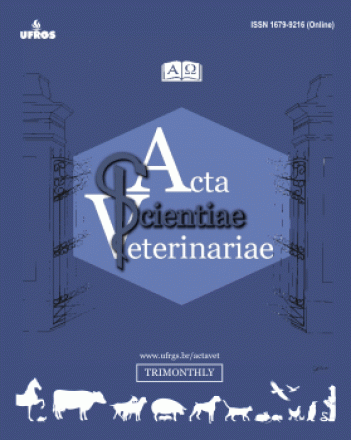Comportamento social de cabras em lactação após reagrupamento
Acta Scientiae Veterinariae
Comportamento social de cabras em lactação após reagrupamento
Autor Correspondente: Carina Morais Correa | [email protected]
Palavras-chave: comportamento social, cabras leiteiras, produção leiteira, reagrupamento
Resumos Cadastrados
Resumo Inglês:
Background: Like other farm animals, domestic goats may react adversely to unfamiliar individuals, and aggression can be
minimized by avoiding the introduction of new individuals into established groups. In modern dairy herds, regrouping
according to age, nutrient requirements, lactation period and milk yield level is a common management practice to enhance
productivity. However, as a result of vigorous fighting associated with the establishment of a new social hierarchy, this practice
may temporally disturb the social structure of the herd. High levels of chasing, ghting and displacement from resources may
indicate social stress in a group of animals. Possible consequences are a lower access to food, water and attractive resting areas
and reduced resting time. This might result in a lower feed intake and a lower growth, suppressed immune response, reduced
milk yield and lower reproductive success. The aim of the present study was to examine the effects of social instability
(regrouping) and its consequences in the milk production of Saanen goats.
Materials, Methods & Results: In a confined dairy system production, 12 lactating Saanen goats were previously kept
together for three weeks in a stable social group. Three female animals were randomly chosen and kept out from the group and
put together with three other females, thus creating an unstable social group. Within eight hours from the time when the goats
were regrouped, the goats were observed at intervals of ten minutes with regard to agonistic behavior (nuzzling/exploring
other goats; frontal clashing or headbutting, or headbutting the shoulders of another goat; headbutting towards other parts of
the its body; chasing another goat which tries to escape; threatening behavior; avoidance; withdrawal; active displacement;
passive displacement). This observation was repeated one week later. The evening production of milk was measured in the
same period. It was observed that the activities of aggression decreased (to 28.1% from 25%) and indifference increased (to
52.7% from 66.8%) day by day; nevertheless milk production presented a continued decrease (53.3%) over the observation
period.
Discussion: Having knowledge of animal behavior is beneficial, because it can improve the production activity in which the
animals will be used. Temperament is positively associated with some characteristics of production. Regrouping is a factor that
causes high levels of aggression and decreased production due to a reduction in food consumption. The level of aggression is
enhanced and much higher in unstable groups. Similarly to what has been documented in previous studies both on goats and
cattle, the animals do not seem to adapt to regrouping, as the aggression level remains almost constant at every regrouping.
Therefore, meeting new group members will most certainly be associated with an increased aggression level. It has been
documented in several animal species that the intensive aggressive interactions that occur between unfamiliar individuals will
affect access to important resources, reduce food intake and growth, lower the immune response, reduce milk yield and lower
the reproductive success. Nonetheless, some authors found negative effects on the milk yield of goats which were regrouped
for the rst time, but milk yield was no longer affected at the second and third regrouping. This may suggest that somehow goats
become adapted to a situation of social stress, at least until the production level is no longer inuenced. In this study, the mixing
of dairy goats in the same group caused disorder in the social balance of the same, which was reflected in milk production.

